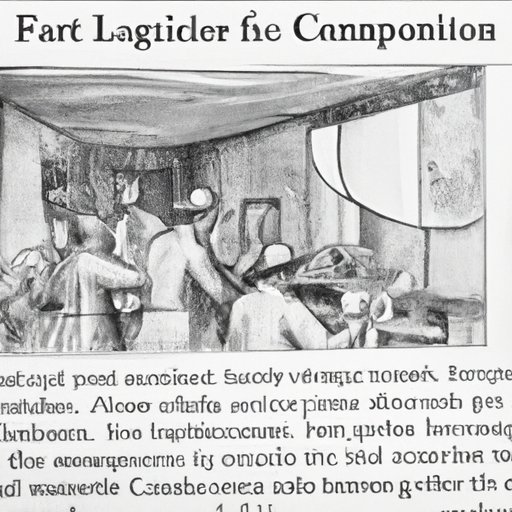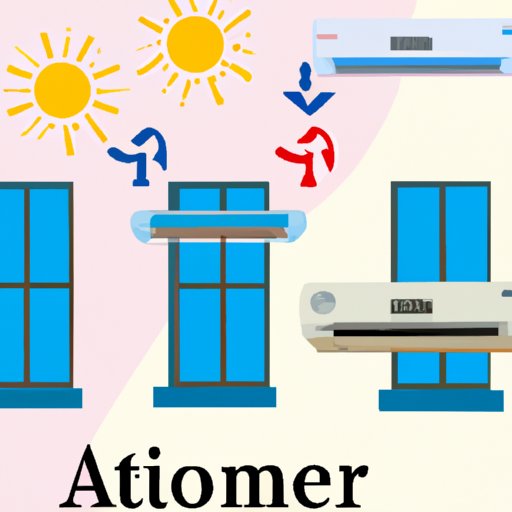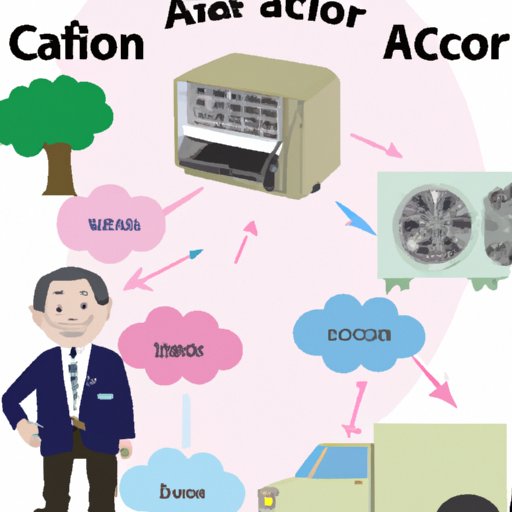Introduction
Air conditioning is defined as the process of controlling temperature, humidity, and other factors in a space or a room. It is a technology that has revolutionized the way we live, work, and play by making our lives more comfortable. This article will explore the life and legacy of the man behind the invention of air conditioning and discuss the historical development of this invention.
The Life and Legacy of the Inventor of Air Conditioning
The inventor of air conditioning was a man named Willis Carrier. He was born on November 26, 1876, in Angola, New York. He was an engineer and inventor who dedicated his life to the advancement of air conditioning. Carrier’s motivation for inventing air conditioning was to solve a problem he had encountered while working in a printing plant. The humidity levels inside the plant were causing paper to buckle and ink to smudge which made it difficult to print accurately. Carrier set out to develop a system that could control the humidity, temperature, and air flow inside the facility so that the printing process could be improved.
Carrier’s invention revolutionized the modern world. His invention allowed us to control the environment indoors, making it easier to work and live in comfort. Air conditioning has become an essential part of modern life in offices, homes, and even cars. Carrier’s invention has also enabled the growth of many industries such as food processing, transportation, and telecommunications. Without air conditioning, these industries would not have been able to thrive as they do today.

A Historical Look at the Invention of Air Conditioning
Before the invention of air conditioning, people used natural methods to cool their homes. They would hang wet sheets in front of open windows to create a cooling effect. However, these methods were not very effective. It was not until the late 19th century that the development of air conditioning began.
In 1902, Willis Carrier developed the first air conditioner. He created a machine that used refrigeration to cool the air. This machine consisted of four main components: a compressor, condenser, evaporator, and expansion valve. These components worked together to cool the air in a space. Carrier’s invention was initially used in printing plants to improve the quality of printed materials, but it soon found its way into many other applications.
Since then, air conditioning has come a long way. Today, air conditioners are much more efficient and use less energy than the original models. They come in a variety of styles and sizes and can be used in both residential and commercial settings. Air conditioning has become an integral part of modern life, providing us with a comfortable and controlled environment indoors.

The Man Behind the Invention of Air Conditioning
Willis Carrier was an American engineer and inventor who is widely credited with developing the first air conditioner. He was born on November 26, 1876, in Angola, New York. He attended Cornell University where he studied engineering. After graduating, he went to work for the Buffalo Forge Company, where he developed the first air conditioner.
Carrier was inspired to create the invention after encountering a problem in a printing plant. He wanted to find a way to control the humidity, temperature, and air flow inside the facility so that the printing process could be improved. As a result of his invention, Carrier revolutionized the modern world by allowing us to control the environment indoors.
Air Conditioning: How It Came To Be
The development of air conditioning was a gradual process. Carrier’s invention was the first step towards creating a system that could control the environment indoors. Over time, engineers and scientists continued to make improvements to the design and function of air conditioners.
The components of the air conditioner were designed to work together to cool the air. The compressor compresses a refrigerant which is then passed through the condenser where it is cooled before entering the evaporator. The evaporator absorbs heat from the air, cooling it down. Finally, the expansion valve regulates the flow of the refrigerant. Together, these components work to cool the air inside a space.
The invention of air conditioning also brought about several innovations. For example, the use of insulation in ductwork helped to reduce energy consumption. Additionally, the use of fans and filters helped to improve the efficiency of the system. These innovations have made air conditioning more efficient and cost-effective.

The Pioneering Mind Behind Air Conditioning
Willis Carrier was a pioneer in the field of air conditioning. He was an innovator who thought outside the box and was not afraid to challenge convention. He was determined to develop a system that could control the environment indoors, and he succeeded. His invention has revolutionized the modern world and has made life more comfortable for millions of people.
What set Carrier apart from others was his passion for problem-solving. He was driven to find solutions to complex problems and was not afraid to take risks. His determination and ingenuity led to the creation of one of the most important inventions of modern times.
Carrier’s legacy is one of innovation and progress. His invention has enabled us to control the environment indoors, making it easier to work and live in comfort. Air conditioning has also enabled the growth of many industries, allowing them to thrive and expand. Without Carrier’s invention, the modern world would look very different.
An Exploration of the First Air Conditioner
The first air conditioner was developed by Willis Carrier in 1902. It was a revolutionary invention that changed the way we live, work, and play. The machine consisted of four main components: a compressor, condenser, evaporator, and expansion valve. These components worked together to cool the air in a space.
The materials used in the construction of the first air conditioner were copper, steel, and aluminum. Copper was used for the pipes and valves, while steel was used for the frame and casing. Aluminum was used for the fan blades. All of these materials were chosen for their durability and strength.
The invention of air conditioning had a huge impact on society. It allowed us to control the environment indoors, making it easier to work and live in comfort. Air conditioning has enabled the growth of many industries, making it possible for them to operate year-round. Without air conditioning, many of these industries would not exist today.

How the Invention of Air Conditioning Changed the World
The invention of air conditioning has changed the world in many ways. It has redefined comfort by allowing us to control the environment indoors. Air conditioning has also enabled the growth of many industries, making it possible for them to operate year-round. Additionally, air conditioning has improved public health by reducing the spread of disease.
Air conditioning has had a profound impact on industry. It has enabled factories to stay open longer and produce more goods. It has allowed companies to store and transport goods safely. Air conditioning has also made it possible for people to work in comfort year-round.
The lasting impacts of this invention are far-reaching. Air conditioning has become an essential part of modern life, providing us with a comfortable and controlled environment indoors. It has enabled the growth of many industries and has improved public health. Without air conditioning, the modern world would look very different.
Conclusion
The invention of air conditioning has revolutionized the modern world. It has made life more comfortable for millions of people and has enabled the growth of many industries. Willis Carrier was the pioneering mind behind this invention, and his legacy is one of innovation and progress. His invention has changed the world in many ways and has left a lasting impact on society.
(Note: Is this article not meeting your expectations? Do you have knowledge or insights to share? Unlock new opportunities and expand your reach by joining our authors team. Click Registration to join us and share your expertise with our readers.)
